A Short Interview with the Senior Art and Visual Culture Majors
For my blog, I interviewed the senior studio art majors during the Senior Thesis show on Friday, April 6, 2018.
Saleha Belgaumi
“I’m not inspired piece by piece, I just make work as part of my life. This is a continuation of me trying to be a person and to process my experience in the world.”
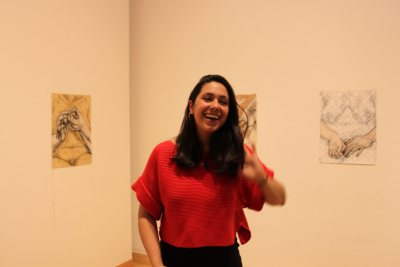
Louise Mark
“Looking at materials that have been sort of cast aside and seeing what you can do with them and what interesting spaces you can make with them- you see people are ducking their heads while walking around some of the sculptures and things like that- and they really transform the space. And so since this is my first time working three dimensionally, I’m just trying to make interesting spaces, but also with materials that give some sense of home and nostalgia, and make you think about places that they remind you of and places they create.”
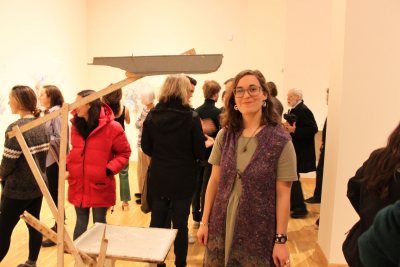
Madeline McKay
“My artistic inspiration stemmed from an interest I’ve been developing in mapping, as a way of making sense of large, conflicting systems of various kinds. So I was thinking a lot about ways that reality feels chaotic, and kind of fractured- with global political turmoil and global warming, and kind of disparate realities of being on screen and not being on a screen. And so I was interested in mapping and creating territories of some kind that conflict, and making them cohere into a larger whole.”
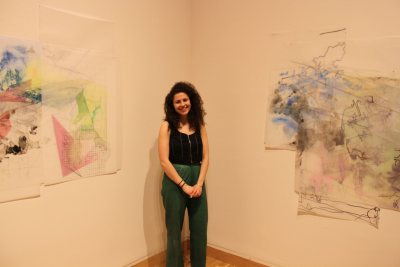
Emily Jolkovsky
“I started doing observational photography because I thought it was a little more interesting to try to find beauty out in the world that already existed than creating beauty in the studio. I think it was a little more objective than my opinions of what’s beautiful, and I found that trying to create abstract beauty made it a little easier to make it more objective because then viewers don’t really bring their own interpretations of the subject matter. You’re just kind of immersed in what is and kind of engaged in trying to figure it out and not knowing what it’s about is a little bit of the process.”
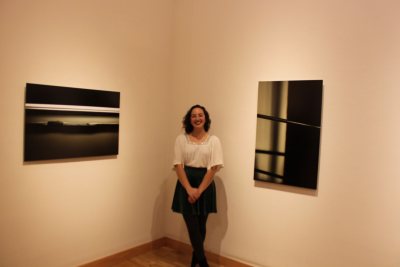
Durotimi Akinkugbe
“The artistic inspiration behind this thesis was I wanted to focus on what I thought to be mundane events in daily life and kind of give them some renewed perspective. So I would film these random instances or occurrences, and in the process of drawing them out frame by frame, it was almost meditative. I had to focus a lot on whatever these individual actions were.”
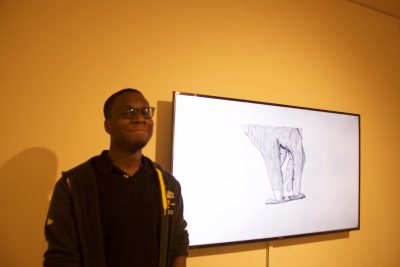
Meghan Cleary
“I was looking a lot an artist name Agnes Martin this year, she did a lot of paintings that involved a grid, so I used that as a basis for all of them. So once i had the grid layed down, I saw where I could take a pattern from.”
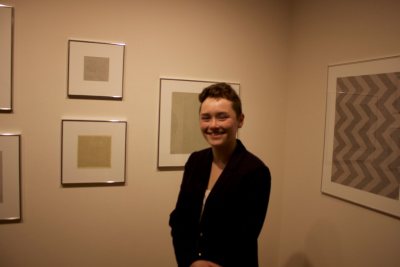
Stephanie Flores
“The thought process behind it was that I love fashion, it’s a big part of my life, and I am thinking about pursuing it in the future. But I’m also conflicted and frustrated with the fact that it perpetuates certain stereotypes, like certain standards of beauty. And so through that I am showing my frustration but also my appreciation for the art of fashion… and all of these women are white females and so it is talking about femininity, but I see them as objects because that’s the way they were portrayed and they’re selling a product, so they kind of become objectified. And through that I’m manipulating their face, and just being frustrated but also appreciating the composition of the photograph and the beauty of the clothing and the beauty of them in some ways, too.”
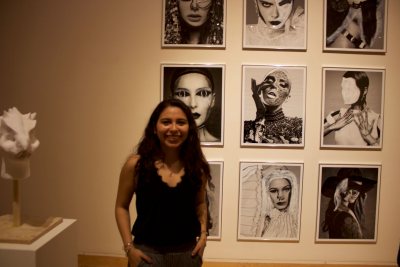
Sophie Olmsted
“So I am functional potter, and when I studied abroad last year in Paris, I took a figurative sculpture class and it was so different than what I had done on the wheel that when I started my project this fall I wanted to combine functional pottery with hand built- with tactile wear. And so that’s kind of how this developed.”
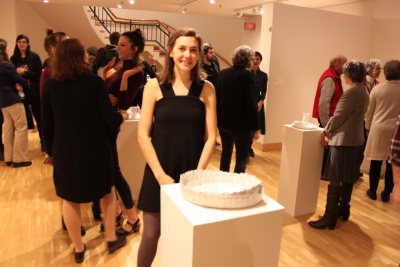
Maria-Anna Chrysovergi
“So in primary school we had a book exchange program, and I got a book from another student who gave me Matilda, and Matilda was actually the first book I sat down and read. And I really liked it, and I’m the kind of person who if I really like something, I’m really imaging myself maybe doing the same things with the protagonist of the book or the movie. So last year we had an assignment to recreate a childhood book that we really enjoyed, and I did a picture in the library that I really enjoyed creating. But also when I made it, I said that’s so me, and then this year when I started making pictures, I was like maybe I can continue doing that. And I started following the same logic- but with following a day of my life here at Bates. So I’m starting with waking up in the morning and then going back to bed, and then doing activities in the meantime. So all the pictures follow what I’m doing in my real life, but with a magical element.”
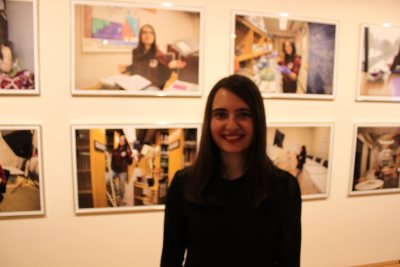
Nora Dahlberg
“I was really inspired by masks and prosthetics and special effects makeup, that are often more of a film or theater industry craft and sort of taking that and refining it into more of a fine art method.”
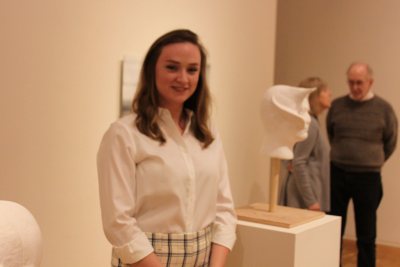
Josh Bilchik
“So these actually came from a lot of painters- Russian, 1920’s constructivist and a little modernist painters like Mondrian and Malevich- and that kind of evolved into me looking at the more contemporary painter Ellsworth Kelly, who does a lot of grid and bright primary color work and I really loved that painting aspect and I’ve always done pottery so I wanted to kind of see what that looks like- what those very geometric designs look like on a round pot. Also what would it look like on a square pot?”
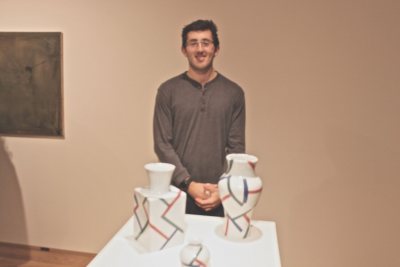
Georga Morgan-Fleming
“In each of them, I’m thinking about a pretty personal experience, and I just kind of hold it in my mind while I’m working through the painting, and it drives a lot of my decisions about where I’m placing things. And so they’re each pretty emotional for me.”
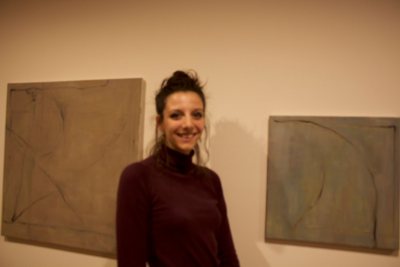
Samantha Purnell, ‘18
Art and Visual Culture, History and Criticism